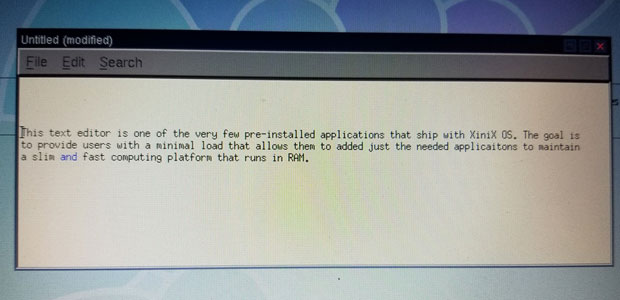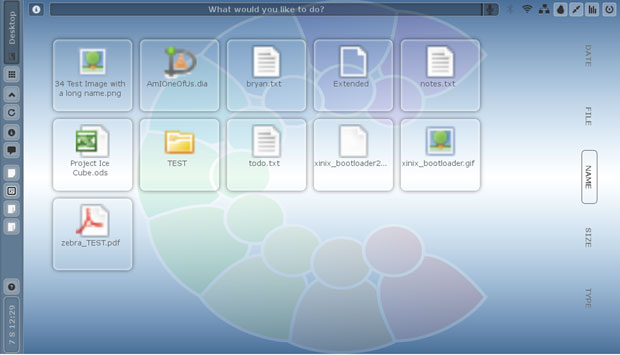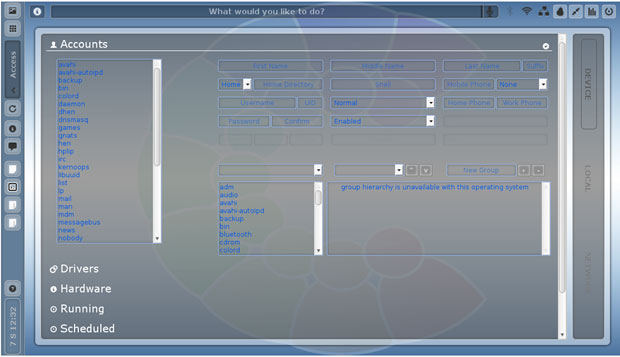Xinix, pronounced “zen-ics,” is an innovative newcomer to the world of Linux distros.
Now in beta, this distro has been spearheaded by a single developer who is slowly bringing other programmers on board to move things along. Despite its early development status, Xinix has potential for Linux fans who like to experiment with new platform concepts and do not mind trying out an operating system that is not yet fully functional.
Essentially, Xinix is an interesting side project for serious Linux fans — it definitely is not suitable for Linux newcomers.
You need a clear understanding of how to configure and troubleshoot on your own. The Xinix experience is highly reminiscent of the Linux home computer experience in the operating system’s early days.
Developer Dave Henderson, who has 15 years of experience as an IT administrator, sees Xinix as becoming the world’s next generation of operating systems. It currently runs on conventional desktops and laptops, and mobile platforms will be coming in the future.
Expectations and Realities
Do not expect a fully developed Linux operating system when you crack open Xinix. By design, it is built to act more like firmware among devices.
The Xinix OS comes with just enough software for basic device operations. Users then take over and personalize their devices by installing any of the software or services located in the Software Shoppe.
Henderson has no long-term goals of entering the enterprise-level market, he told me. Instead, he plans to focus on embedded, personal, and professional environments, ranging from small office/home office operations (SOHO) to medium-sized companies.
One of Henderson’s primary goals is to keep Xinix small and efficient. He built in just enough framework to get the computing device into an environment where the users’ work takes center stage.
What initially stoked my interest was the new in-house user interface, Web.de, a desktop environment based on Web standards such as HTML and JavaScript.
This style of interface has key advantages, Henderson said. For example, it provides optional built-in remote access capabilities, and it can easily be modified or customized.
Under the UI’s Hood
Xinix is a Web-based distro with a very small footprint. The full GUI comes in at less than 100 MB. The embedded version is less than 44 MB.
Xinix originally forked from TinyCore Linux, reviewed here. Henderson is morphing Xinix into a distro in its own right, though.
He uses the software from the TinyCore repo but applies a different naming convention. That may cause some problems in adding titles to your local installation. Just remember that this is an early release and is a work in progress.
The UI has three themes available: OEM, Windows-esque, and Unity-esque. These themes reinforce the project’s goal of engineering a user interface that is intuitive and simple to use.
Xinix OS has several promising characteristics that separate it from the growing pack of new Linux OS offerings. For example, the package manager (pax) is built from scratch and is unique to this distro. The same is true of the UI and related applications, like the Web browser and website tools.

System maintenance is another nice touch. Xinix is not based on fixed releases. Instead, updates are continuing or rolling releases.
Look and Feel
The screen layout is much different than what you see in other Linux distros. There are few panels or notification areas. Docks, a settings panel, and a main menu are nonexistent.
Instead, Xinix is built around a system of task modules of sorts. Along the left edge of the screen is a vertical area that holds tabs. Click one to open a window display in the center of the screen.
Xinix provides the following tab options: Access, State, Widgets, Desktop, Recent, Info, Connections, and Epoch, which is a full-screen calendar display. Smaller windows associated with the tabs open on the right side of the screen, offering more user choices.
The closest thing to a menu is the Access display, which presents a list of browsing options (similar to using a file manager), software categories, scheduled events, and setting/configurations.
Using Xinix
You can install Xinix to storage devices for a totally portable computing experience. It is very fast, thanks to running entirely within RAM to make it very responsive.
The UI is clearly unique. I am not sure that it is intuitive, but it has a very small learning curve, nonetheless.
Xinix provides a non-standard — but logical — division between system and user. It uses several alternative directory names for consistency among newer versions of Windows and macOS. It lets users interact through multiple interfaces, including command line, graphical, and web.
Henderson has a catchy slogan for this Linux project, which is indicative of the simplicity that drives his UI design. In fact, his slogan might say it all: “Achieve Zen with Xinix.”
Bottom Line
Normally, Linux Picks and Pans does not review such early new beta releases. However, the framework and unique features of Xinix OS make it such a radically different Linux distro that I kept coming back to tinker with it. The latest update was posted on June 15.
If you enjoy delving into unchartered territory with software, check out this latest version. It shows solid improvements over earlier efforts. Otherwise, wait for later upgrades as Xinix OS gets more developed.
Download Xinix OS here. The Vanilla Edition (VE) is for devices like desktops and laptops. The Embedded Edition (EE) is for routers and set-top boxes.
Suggest a Review
Is there a Linux software application or distro you’d like to suggest for review? Something you love or would like to get to know?
Email your ideas to me, and I’ll consider them for a future column.
And use the Reader Comments feature below to provide your input!


























































Well, I’m not even convinced that Linux is OK, with all the bugs and issues which emerge almost daily. So, if you are offering me something even worse – no, thanks!
Does Xinix offer persistence if run on a USB drive?
Yes, it does. Follow the installation directions. If you run XiniX in live session, there is no persistence. But you can install to a hard drive for normal operation or to an external drive to acquire persistent memory as well.